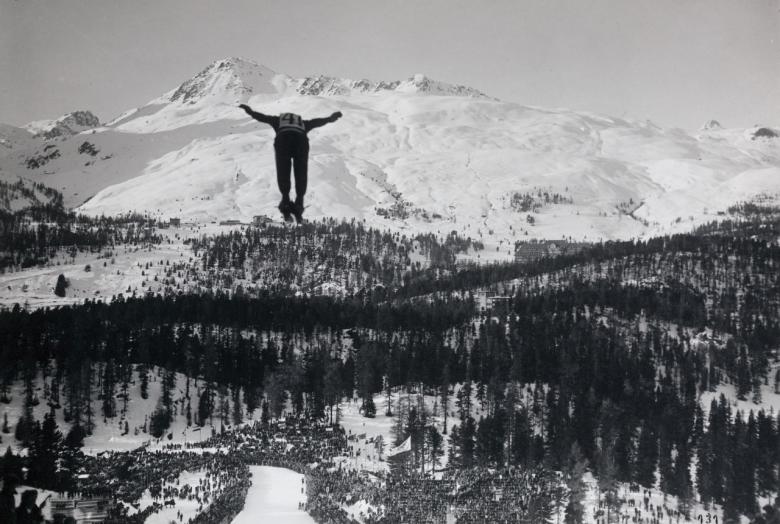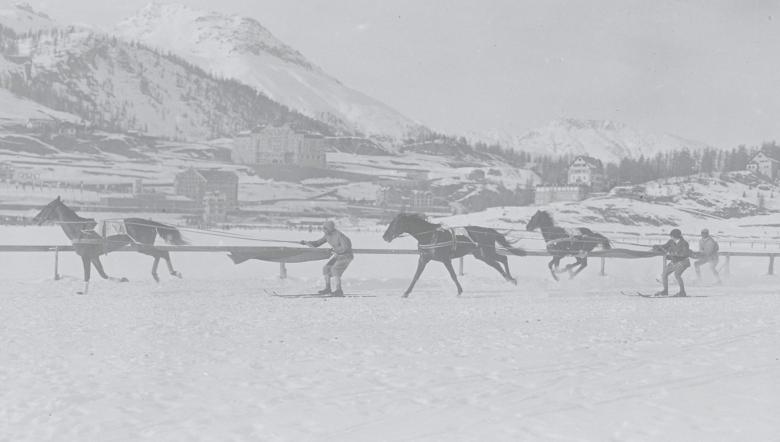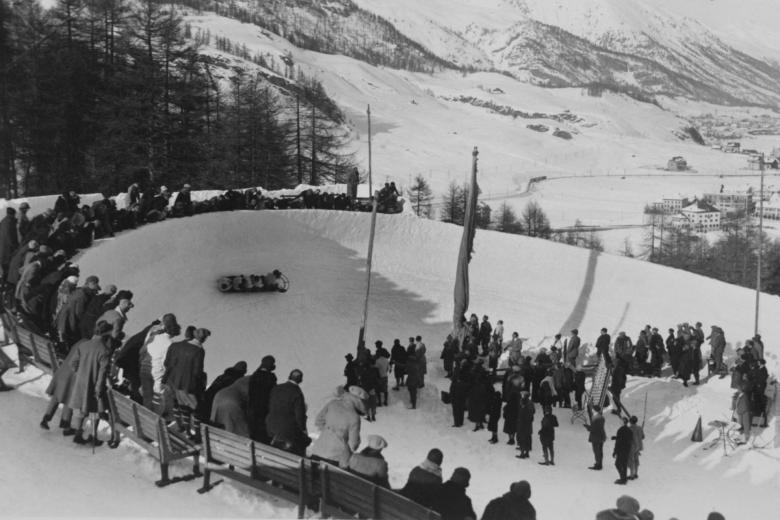Switzerland: cradle of the Winter Olympics
In January 2020, Switzerland will host another Olympic Winter Games. Whereas the Winter Olympics of 1928 and 1948 took place in St Moritz, the 2020 games will put Olympic capital Lausanne in the spotlight.
From 9 to 22 January, the sixth Youth Olympic Games (YOG) will take place in different Swiss regions, with events held in Lausanne, the Swiss and French Jura, the Alps and of course, historic Olympic venue St Moritz.
But before plunging into the euphoria of Lausanne 2020, which will bring together 1,880 athletes aged 15 to 18 years in the spirit of the YOG, find out what made Switzerland the Olympic destination of choice for the third time in its history.

Winter sports are part of Switzerland's heritage, so it is not surprising that the first Olympic Winter Games were held in this country in 1928. The first? Not exactly! The St Moritz Winter Games are known as the second Olympic Winter Games, following the International Olympic Committee's (IOC) decision to retroactively grant the official status of First Olympic Winter Games to the 1924 Chamonix International Winter Sports Week.
In 1928, the small Swiss town of St Moritz in Graubünden hosted 464 athletes from 25 different nations. Far-flung countries like Argentina, Japan and Mexico, which had not fielded athletes four years earlier, joined the Olympic movement. For nine days, snow sports pioneers competed in 14 events. The area around Lake St Moritz, which freezes over in winter, was a perfect example of Swiss diversity, as its inhabitants speak German, Italian and Romansh – three of Switzerland's four national languages.
St Moritz, between tradition and modernity
St Moritz was one of the first Alpine villages to become a winter sports resort. Its historic hotels began to promote winter sports in the middle of the 19th century, and the town installed one of the first ski lifts in the world in 1938. It was therefore no surprise that the IOC chose St Moritz as the venue for the 1928 Winter Olympics, though other Swiss Alpine resorts were in contention.
St Moritz remains today a dynamic resort which cherishes its own traditions but is also open to the world, having hosted numerous international competitions. Despite the good snow conditions expected for the 1928 Winter Games – St Moritz lies at an altitude of 1,822 metres – the volunteers in charge of ensuring the smooth running of the competitions had their work cut out for them. After an opening ceremony marred by a blizzard, spring temperatures forced the 10,000-metre speed skating event to be abandoned. Despite this setback, the IOC decided to continue to organise games dedicated to winter sports, as the over 40,000 spectators who had travelled to Graubünden had been a clear testament to popular enthusiasm for the Winter Olympics.

Renewed confidence during uncertain times
After the Second World War, St Moritz was awarded the 1948 Olympic Winter Games. The town offered the advantage of having competition venues that met the standards required for hosting the Olympics. Switzerland's neutrality during the war also made it the ideal host for the first post-war Games. Although the fifth Winter Games were organised with modest resources, the Olympic spirit triumphed, as there were numerous instances of exchanges of equipment among the 669 athletes from the 28 countries represented.

Original sports
Switzerland has always been a creative force as an Olympic host country. In 1928, frozen Lake St Moritz was used as a track for a skijoring race, in which skiers were pulled over the snow by teams of horses. 'Military patrol' races, featuring teams of soldiers, were highlights of the Games in 1928 and 1948. Known today as biathlon, this sport was added to the Olympic programme at the 1960 Winter Games. The 1948 Winter Games also showcased the first and last winter pentathlon event held at the Olympics. This unusual discipline mixed five summer and winter sports: cross-country skiing, shooting, downhill skiing, fencing and horse riding.

Swiss tradition and innovation
Having launched the Winter Games in 1928 and hosted what were dubbed the 'Games of Renewal' in 1948, Switzerland is now preparing to host the 2020 Youth Olympic Games in Lausanne. Although the IOC established its headquarters in Lausanne in 1915, designated the city as the world's Olympic capital in 1993 and opened the Olympic Museum that same year, it will have taken a little over a century for the city to finally receive its true Olympic honours by hosting the Youth Olympic Games 2020.

St Moritz will host four disciplines, including the mythical St Moritz–Celerina bob run, which is being held in the town for third time. The world's only bobsleigh run made of natural ice is also the oldest. The ice track, which exploits the natural terrain from St Moritz (1852 m) to Celerina (1738 m), has been recarved into the breathtaking Graubünden landscape since the end of the 19th century.
The Olympic medallists of this young generation of athletes from 80 nations will take to the podium at the Place des Médailles au Flon in Lausanne or in the town square in St Moritz.
Swiss innovation and tradition: Lausanne 2020 has the best of both.

I




